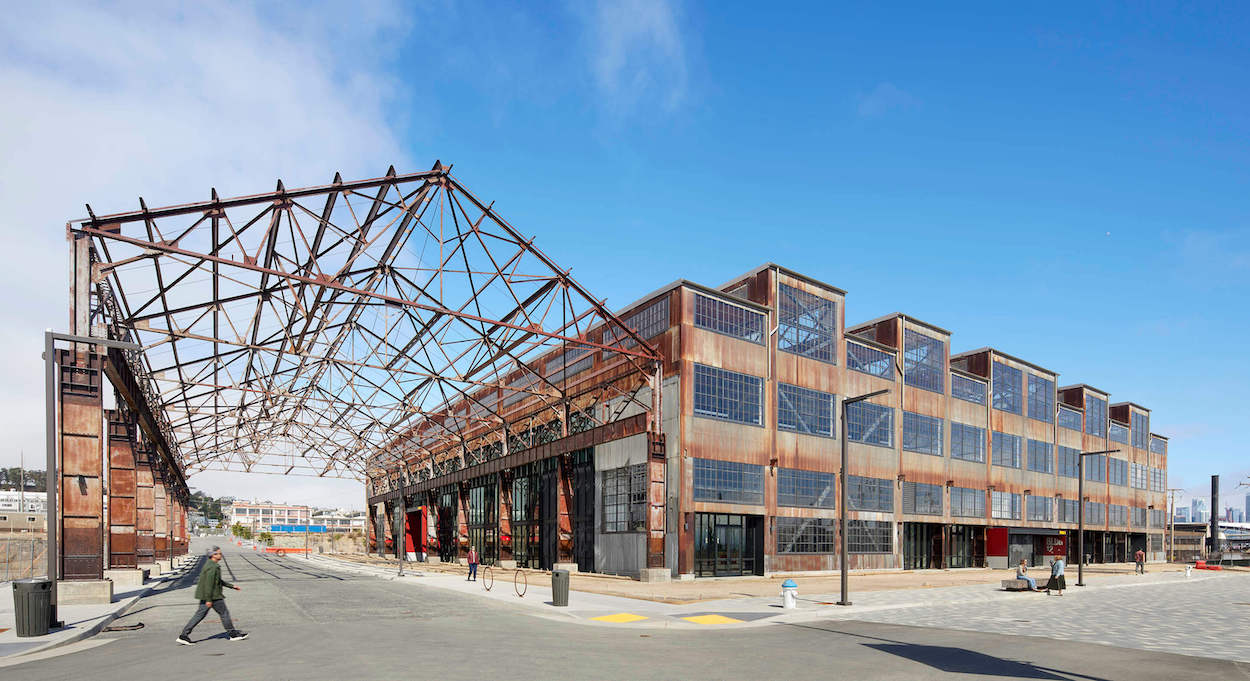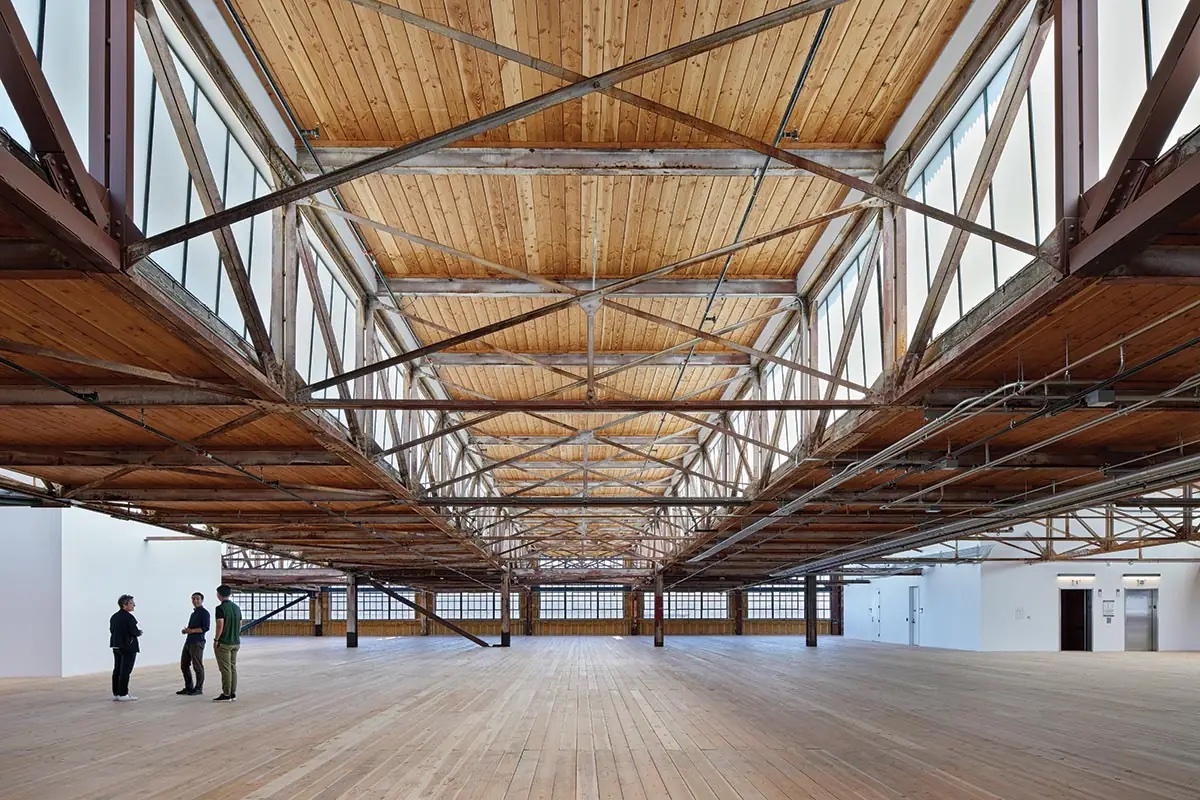In its heyday, Pier 70 thrived as an essential shipbuilding facility during World War II. Located on the waterfront of San Francisco’s Dogpatch neighborhood and deemed by the National Trust for Historic Preservation as the most intact 19th-century industrial complex west of the Mississippi, the site was abandoned as postwar demand for naval vessels waned. Many of its buildings have been demolished, especially after Bethlehem Steel wound down operations there in 1982. One exception is Building 12, a gargantuan former ship-hull factory reimagined as the centerpiece of a vast mixed-use development envisioned by Brookfield Properties and slated for completion in the mid-2020s.
Rehabbing the rusted three-story behemoth, preserving its historic character, and establishing it as the future complex’s anchor proved a herculean task. Given its waterfront location, the developers determined it should address sea-level rise projections through the end of the century. That means the salvaged structure needed to be lifted by ten feet using hydraulic jacks—an act of “architectural levitation” that required the utmost precision and recalibration after every move. They brought in global firm Perkins & Will to spearhead the maneuver, which plodded ahead six inches at a time over the course of five weeks until a new concrete foundation could be poured underneath and interior renovations could begin.
Now it’s finally complete. Traces of the ‘40s-era compound remain—rusted exterior cladding, dings on interior columns from factory mishaps—but Building 12 has been transformed into a commercial hub suited for a post-pandemic economy. Plans for a ground-level food hall have prompted lease signings by local brewery Standard Deviant and bakery Breadbelly. Maker spaces and creative offices will occupy the upper floors. (RH and the Museum of Craft and Design are a jaunt away.) Revitalizing the rest of the pier will require its own challenges and similar topographic maneuvers, but Brookfield promises a lively mix of office, retail, commercial, and 1,400 much-needed housing units when it wraps by 2030.


